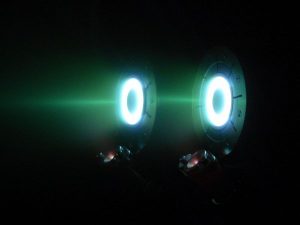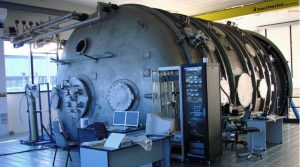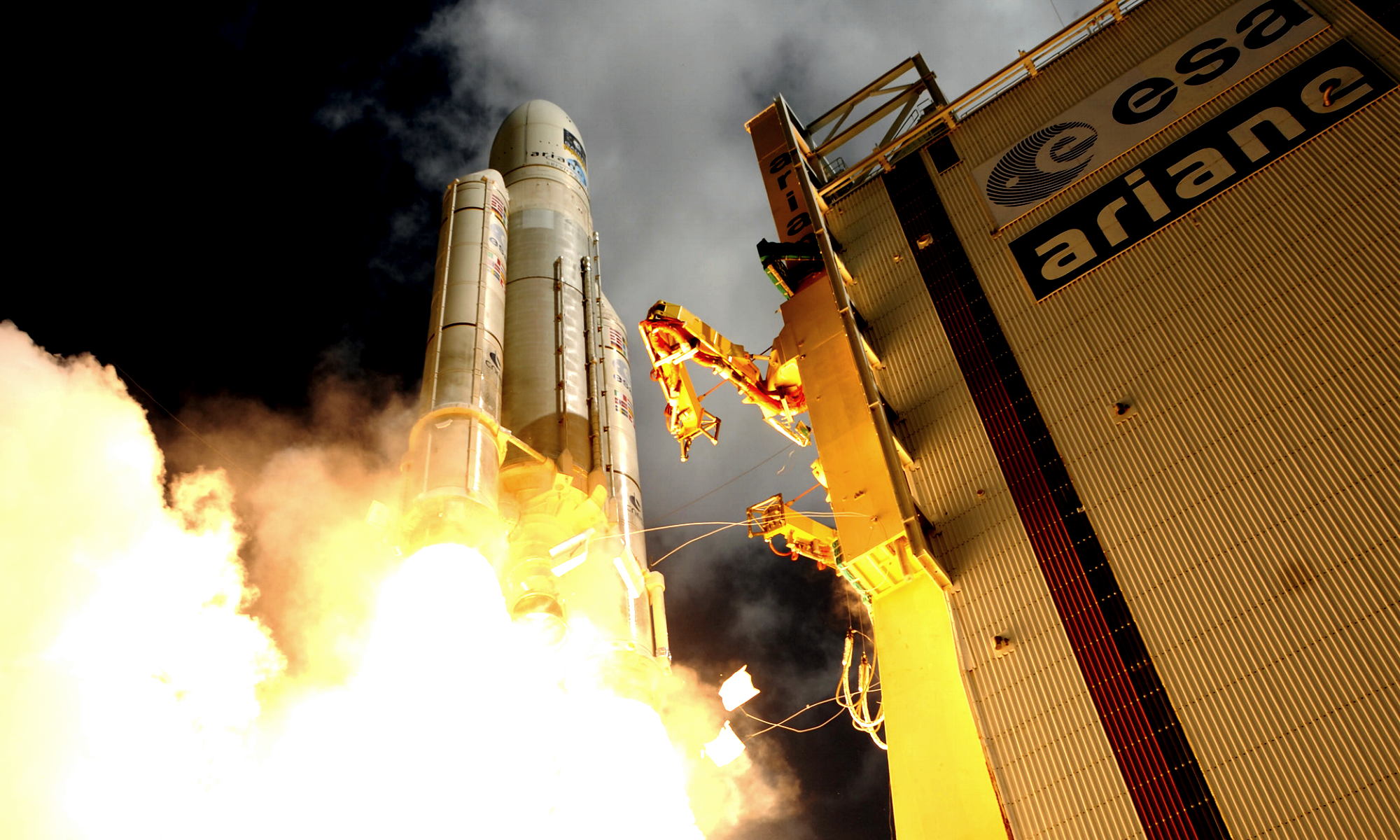Aerospace Engineering at the University of Pisa
Aerospace engineering at the University of Pisa covers all of the traditional disciplines pertaining to the fields of fluid dynamics, flight mechanics, propulsion, materials and structures for aeronautical systems and space systems. The theoretical and applied research activities in these areas are carried out in the laboratories of the Aerospace Engineering Division and through a long-standing relation with its former spin-off company, Sitael SpA, which hosts several laboratories.
Space Engineering Research Areas
 Space engineering at UniPi has evolved in the last three decades from a sub-topic of aeronautical engineering into a broad spectrum of basic as well as applied disciplines related to the development of space vehicles and transportation systems. Research has traditionally focused in Pisa on the exploration of the areas subject to the most challenging technological demands. This tradition places a high premium on an in-depth understanding of fields – such as thermal-fluid sciences, advanced propulsion and astrodynamics – directly related to the advancement of space technologies. As a consequence, space engineering students from the University of Pisa are known and sought after, both nationally and internationally, for their broad yet intense education and for their ability to deal with new and challenging problems. Major areas of study and research in space engineering currently pursued at the University of Pisa are briefly described below.
Space engineering at UniPi has evolved in the last three decades from a sub-topic of aeronautical engineering into a broad spectrum of basic as well as applied disciplines related to the development of space vehicles and transportation systems. Research has traditionally focused in Pisa on the exploration of the areas subject to the most challenging technological demands. This tradition places a high premium on an in-depth understanding of fields – such as thermal-fluid sciences, advanced propulsion and astrodynamics – directly related to the advancement of space technologies. As a consequence, space engineering students from the University of Pisa are known and sought after, both nationally and internationally, for their broad yet intense education and for their ability to deal with new and challenging problems. Major areas of study and research in space engineering currently pursued at the University of Pisa are briefly described below.
- Space Systems. Current research in this area focuses on the design and simulation of space vehicles and missions, with particular emphasis on micro/nanosatellites and systems employing electric propulsion, and on the development of miniaturized stratospheric platforms and the relevant guidance and mission planning methods.
- Space Propulsion. The major topics of ongoing research in this area include experimental and theoretical studies on electric propulsion (Hall, MPD and FEEP thrusters), chemical rocket propulsion (propellant feed turbopumps , green propellant catalists and rocket engines) and gas turbines.
- Astrodynamics, mission analysis and design. Research in this field mostly focuses on dynamical systems and optimal control problems involving non-linear astrodynamics solutions; optimization of non-keplerian low-thrust trajectories in multi-body regimes; flight dynamics and control of electric and solar sails.
- Aerothermodynamics. Ongoing research in this field includes experimental and numerical aerothermodynamics and magnetohydrodynamics, space systems and mission analysis, gas turbines and turbopumps.
- Fluid Dynamics. The major topics of ongoing research in this area include: bluff-body aerodynamics, time-frequency signal analysis, lifting surface aerodynamics, numerical simulation of turbulent flows, numerical simulation of multiphase flows, fluid dynamic stability.
- Structures and Materials. Research in this field mostly focuses on: fatigue and fracture mechanics of advanced materials and welded structures, damage tolerance of aerospace components, multiple site damage, buckling and delamination of composite materials, probabilistic design of structural components, structural design optimization.
Research Facilities
The Aerospace Engineering faculty has available a diversity of experimental facilities in support of the research areas described above.

Main experimental activities in space propulsion are hosted at Sitael SpA., a former spin-off company of the University of Pisa set-up and managed by the propulsion faculty members of DIA. Ranking among the best in Europe, the propulsion facilities cover a wide range of technologies, from electric rocket propulsion, to hypersonic aerothermodynamics, to chemical rocket propulsion, to rotordynamics and cavitation of liquid propellant rocket engines. In these areas Sitael hosts a unique set of laboratories:
- The Electric Propulsion Laboratory, which operates the IV10 Space Vacuum Simulator, Europe’s largest and most powerful vacuum chamber for end-to-end characterization of EP systems, and the more cost effective IV4 Vacuum Facility. Both chambers are equipped with a complete array of diagnostics, including plasma probes as well as non intrusive capability such as infrared thermography, ultra high speed imaging, spectroscopy.
- The Micropropulsion Laboratory, which operates six ultra-high vacuum (10-9 mbar) chambers, mainly used for FEEP and resistojet R&D and flight qualification tests.
- The Chemical Propulsion Laboratory, comprising the Cavitating Pump Rotordynamic Test Facility, an advanced test rig capable of fully characterizing turbopump flow phenomena and rotordynamic impeller whirl forces in both cavitating and non-cavitating similarity conditions, the Thermal Cavitation Tunnel, suitable for thermal cavitation experiments on test bodies, and the Green Propellant Rocket Test Facility, an easily reconfigurable and expandable experimental apparatus for performance characterization of liquid propellant rocket engines.
- The Aerothermodynamics Laboratory, equipped with the High Enthalpy Arc-Heated Tunnel, a pulsed, Mach 6 to 9 hypersonic wind tunnel with specific enthalpies up to 6 kJ/kg in the 104 – 106 Reynolds number range, typically used for small scale experiments in aerothermodynamics and Magneto-Hydro-Dynamics, equipped with a two-photon Absorption Laser Induced Fluorescence system for concentration measurements of atomic O and N.
State-of-the-art electronic instrumentation is being developed and used. Extensive use is made of computer systems for real-time control of experiments, for data acquisition, processing, and storage, and for digital image processing. Computational facilities include several workstations and remote supercomputers generally available at national research centers and institutions. Graphics workstations with access to major commercial structural and fluid dynamic simulation codes are available to support research in fluid dynamics and solid mechanics.
Other laboratories are hosted at UniPi’s Aerospace Engineering Division premises:
- the Space Systems Laboratory (see website);
- the Structures and Materials Laboratory, equipped with special facilities for testing the failure/fracture behavior of materials and aerospace structures under static, dynamic and fatigue loads;
- the Fluid Dynamics Laboratory, comprising a recirculating 10 m/s to 35 m/s wind-tunnel with a 1.1 m diameter and 1.5 m long test section for experimental aerodynamic research. The tunnel is equipped with hot-wire anemometric sensors, high speed pressure transducers, computer controlled traversing rigs and strain gage balances for the characterization of the flow field and of the forces on the test models;
- the Flight Mechanics Laboratory, equipped with a fixed-base flight simulator prototype, four workstations and specialized software, partly developed in-house for research and teaching purposes in the flight mechanics area.
- the Aeronautical Systems Laboratory, equipped with a virtual Iron Bird allowing for “man-in-the-loop/ hardware-in-the-loop real-time” simulations of the dynamic behavior of an aircraft operating with Fly-by-Wire Flight Control Systems.

